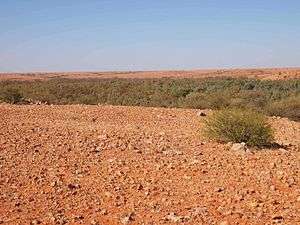Gallery forest

Gallery forests are forests that form as corridors along rivers or wetlands and project into landscapes that are otherwise only sparsely treed such as savannas, grasslands, or deserts.
Gallery forests are able to exist where the surrounding landscape does not support forests for a number of reasons. The riparian zones in which they grow offer greater protection from fire which would kill tree seedlings.[1] In addition, the alluvial soils of the gallery habitat are often of higher fertility and better drainage than the soils of the surrounding landscape and have a more reliable water supply at depth. As a result, the boundary between gallery forest and the surrounding woodland or grassland is usually abrupt, with the ecotone being only a few metres wide.[2]
Gallery forests have shrunk in extent worldwide as a result of human activities, including domestic livestock's preventing tree seedling establishment and the construction of dams and weirs causing flooding or interfering with natural stream flow. In addition to these disturbances, gallery forests are also threatened by many of the same processes that threaten savannas.